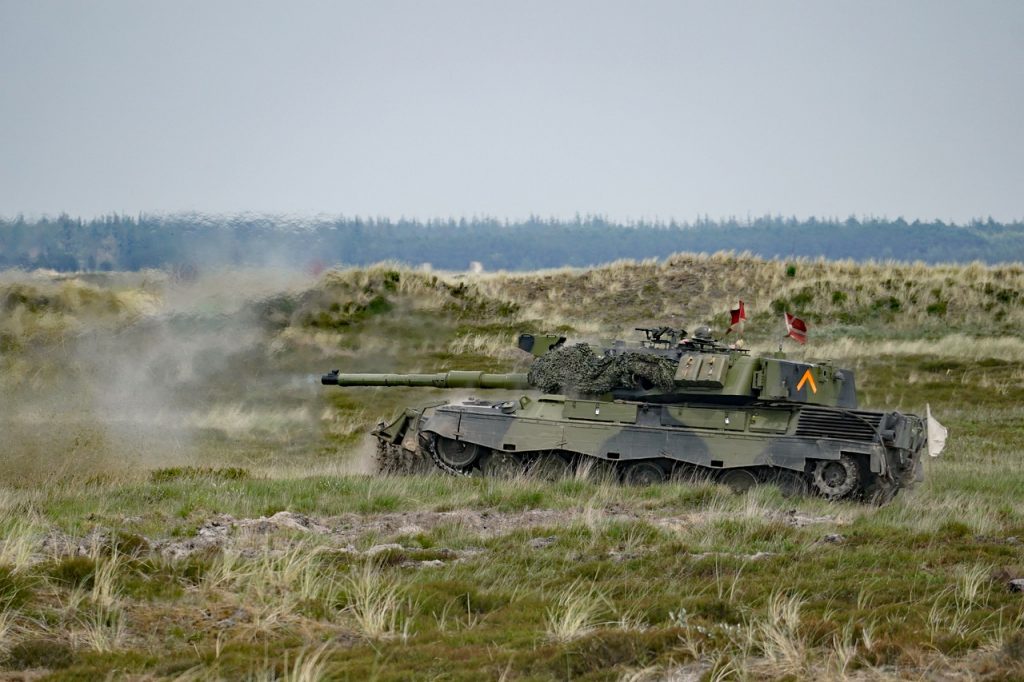
During his first visit to the Bendler Block in Berlin, Croatian Deputy Prime Minister and Defense Minister Ivan Anušić revealed Croatia’s initiative to acquire 50 Leopard 2A8 main battle tanks from Germany, a strategic move aimed at bolstering national defense capabilities. In discussions with German Defense Minister Boris Pistorius, Anušić underscored this acquisition as part of a broader military collaboration, demonstrating Croatia’s commitment to modernizing its armed forces.
The two ministers formalized their cooperation by signing a declaration of intent, which included a mutual support framework referred to as a “ring swap.” Under this arrangement, Croatia will initially send Ukraine 30 main battle tanks, along with 30 Yugoslav-designed M-84 and M-80 infantry fighting vehicles, as well as spare parts and ammunition. This support is anticipated to enhance Ukraine’s defense posture and will be financed through German assistance to Croatia.
The Yugoslav M-84, an adaptation of the Soviet T-72, is engineered for combat efficacy and mobility. Powered by a 1,000-horsepower V-46TK diesel engine, it can reach speeds of up to 43 mph (70 km/h) and has an operational range of 310 miles (500 km). Its armor combines composite and spaced elements, offering substantial protection against various threats.
Armament includes a 125mm smoothbore gun capable of firing multiple types of ammunition, such as high-explosive anti-tank (HEAT) rounds and armor-piercing fin-stabilized discarding sabot (APFSDS) rounds, complemented by a 7.62mm coaxial machine gun and a roof-mounted 12.7mm anti-aircraft machine gun. The M-84 is equipped with an advanced fire control system, the SUV, which enhances targeting accuracy compared to earlier Soviet designs, featuring a laser rangefinder, ballistic computer, and night-vision capabilities for improved target acquisition.
The tank’s stabilizer system ensures that the main gun remains on target during movement, providing a tactical edge in dynamic combat situations. Despite its firepower and mobility, the M-84 is regarded as somewhat outdated compared to newer Western models, lacking advanced protection and situational awareness systems.
Initially produced in Yugoslavia in the early 1980s as a T-72 upgrade, the M-84 has undergone modifications over time to enhance its reliability and performance. While it has primarily been used for training and regional conflicts, it remains a key asset for both Croatian and Serbian armored units, despite its age.
Deploying the M-84 to Ukraine would introduce a capable, albeit older, tank into a high-intensity combat scenario. While its 125mm gun could effectively counter older Soviet-era armored vehicles, it may be vulnerable to contemporary anti-tank systems and drones employed by Russian forces. The absence of reactive or active protection systems could expose it to precision-guided munitions.
Nevertheless, the M-84 could serve as a valuable asset for Ukrainian ground forces, particularly in support roles or providing indirect fire in less contested areas. Through effective positioning and tactical support, it could contribute significantly to Ukraine’s military efforts.
The partnership with Germany enables Croatia to transition away from its older Soviet-era equipment, integrating advanced Western technologies. The first deliveries of Leopard 2A8 tanks are expected by 2026, a crucial step toward aligning Croatia’s military capabilities with NATO standards. Pistorius highlighted that Croatia’s investment in Leopard 2A8 tanks would not only strengthen NATO’s collective defense but also reinforce Germany’s role as a vital industrial partner.
Croatian officials have expressed strong support for the acquisition, viewing the Leopard 2A8 as essential for military modernization and NATO integration. Defense Minister Mario Banožić emphasized its strategic significance, stating, “This acquisition will substantially enhance our military capabilities, ensuring interoperability with NATO forces and ushering in a new era for Croatia’s ground forces.”
Prime Minister Andrej Plenković echoed this sentiment, stressing the long-term strategic value of the purchase as vital for maintaining a modern and resilient military in response to evolving security challenges.
The Leopard 2A8, the latest iteration of Germany’s esteemed tank series, incorporates advanced specifications tailored for modern, high-intensity combat. Central to its design is the MTU MB 873 Ka-501 liquid-cooled V12 diesel engine, which produces approximately 1,500 horsepower, enabling the tank to achieve speeds of 45 mph (70 km/h) and an operational range of nearly 300 miles (500 km). Its hydropneumatic suspension system enhances maneuverability across challenging terrains while ensuring stability.
Equipped with a sophisticated fire control system that includes the EMES 15 dual-axis stabilized main sight and the FERO Z18 auxiliary sight, the Leopard 2A8 offers superior accuracy in target engagement. It features thermal imaging and laser rangefinding capabilities that facilitate accurate targeting in both day and night conditions, enabling crews to identify enemy positions from significant distances.
Additionally, the tank’s automatic target tracking system maintains a lock on moving targets, crucial for engaging adversaries in fast-paced combat. The Leopard 2A8 is armed with a 120mm L/55 smoothbore gun capable of firing a range of NATO-standard munitions, including APFSDS rounds designed for penetrating advanced armor, as well as HEAT rounds for engaging personnel and fortified structures. It also supports programmable high-explosive multi-purpose (HEMP) rounds for flexible engagement scenarios.
In terms of defensive capabilities, the Leopard 2A8 is outfitted with active protection systems (APS) designed to counter modern threats, including the Trophy APS, which can intercept incoming anti-tank missiles. Its modular composite armor enhances protection against kinetic and explosive threats, while a digital C4I system enhances battlefield coordination and situational awareness.
Overall, the Leopard 2A8 represents the forefront of tank design, balancing offensive capabilities with superior protection and enhanced connectivity, crucial for contemporary warfare.





